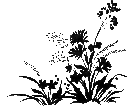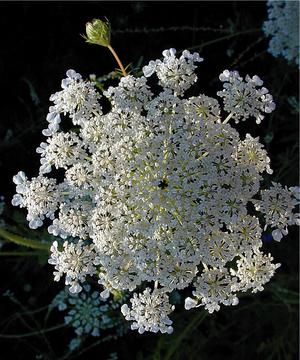 |
The Preserve |
News and Events |
Natural History |
The Trail |
Monitoring |
Restoration |
Library |
Organization |
|
Todmorden Mills Wildflower Preserve
|
Nature NotesYour nature guide for the week July 5-July 11This year's transition from spring into summer has been slower than normal, but the lazy, hazy days are here.Wildflowers
Along the woodland trail through the swamp area look for Fringed Loosestrife which has started flowering. The pale yellow flowers droop a little (often referred to as "nodding", as in nodding-off to sleep, perhaps) and a careful examination of the petals reveals a ragged edge. Most people are familiar with the brown cigar-shaped seedheads of cattails, but for a while now there is an opportunity to see the flowers. Tiny male and female flowers are densely packed into separate parts of the flower spike. The male flowers, which produce yellow pollen, are at the top of the stalk; below are the greenish female flowers. There are two cattail species at Todmorden and they can be differentiated based on the spacing between the male and female sections. The Narrow-leaved Cattail has a gap of several centimetres between the flowers, whereas the Common Cattail has no gap. Soon, the male flowers will disintegrate and the pollinated female flowers will transform into the familiar seedhead packed with downy seeds. Trees and ShrubsThe profuse flowering of Little-leaf Linden, imported from Europe and planted along many of Toronto's streets, is a cue to look for for our native linden, the Basswood. Basswood is a characteristic tree of our eastern deciduous forest, and it has been replanted at Todmorden as part of the restoration effort. Basswood has large, heart-shaped leaves and white flowers which hang down in clusters. Attached to each cluster is a bract which looks like the wing of a maple key. Common Elderberry continues to flower throughout the Preserve; there are several large shrubs at the pond viewing-stand, covered in large flat-topped clusters of white flowers. InsectsThe trail through the meadow has become dense with tall grasses, and the huge leaves of the Common Burdock are prominent. Some of the stems of Burdock look quite black and closer examination reveals heavy infestations of aphids. Attending the aphids are Red Ants which feed on the dilute honeydew which the aphids excrete. The presence of the Red Ants may benefit the aphids as the ants are aggressive and likely a deterrent to visiting aphid predators such as ladybugs. Mosquitoes remain quite abundant in the woodland trail, particularly through the swamp areas, so bug repellent is recommended. Nature Notes is researched and written by Mike Dennison and Alejandro Lynch, and is published each week by Hopscotch Interactive (www.hopscotch.ca). In addition to this online version, Nature Notes is available as a print-friendly PDF and as a text-only email version. Please contact Mike Dennison to receive these, or for more info (tel: 416-696-7230, email: dennison@hopscotch.ca). |
| Copyright © 2003-2004 Todmorden Mills Wildflower Preserve |
